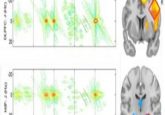Predicting memory loss in old age

Risk factors for memory loss in old age have been established in a recent study, indicating potential at-risk individuals and novel intervention strategies for neurodegenerative disorders.
Reduced memory capabilities have been established as an early sign of developing cognitive and neurodegenerative diseases such as Alzheimer’s. Now a team of researchers from the University of Alberta (AB, Canada), led by Peggy McFall, has established a set of predictive risk factors for memory decline.
McFall and her team used types of machine learning known as latent class growth analysis and random forest analysis to study a population of 882 people between the ages of 55 and 95, divided into two groups, old-young (55-75) and old-old (75-95). Latent class growth analysis was used to further subdivide the populations into three cohorts based on their memory state: stable, normal and declining. Random forest analysis was able to establish the key determinative factors for inclusion in the stable, normal or declining groups for both the old-young and old-old populations.
The hope for this research is that clinicians will be able to use these established predictive factors to identify at-risk individuals and allow them to intervene early.
- Reversing memory loss
- Mapping the course of neurodegeneration
- Tasting the rainbow could protect against dementia
Participants in the stable category were found to be more likely to be female and educated, while taking part in more social and novel cognitive activities, for instance learning a new skill. Furthermore, a lower heart rate, higher body mass index, living companions and the participation in self-maintenance activities were also found to be predictive protective factors for the old-young stable participants, while the old-old stable cohort were found to have fewer depressive symptoms and a higher paced gait. Largely the reverse was true for in both old-young and old-old cohorts in the declining groups.
The hope for this research is that clinicians will be able to use these established predictive factors to identify at-risk individuals and allow them to intervene early. McFall explains that, “these modifiable risk and protective factors may be converted to potential intervention targets for the dual purpose of promoting healthy memory aging or preventing or delaying accelerated decline, impairment, and perhaps dementia.”





